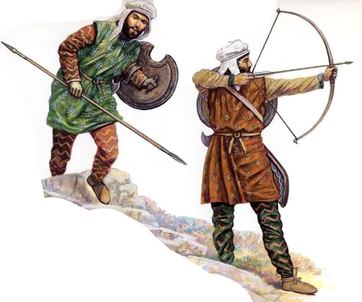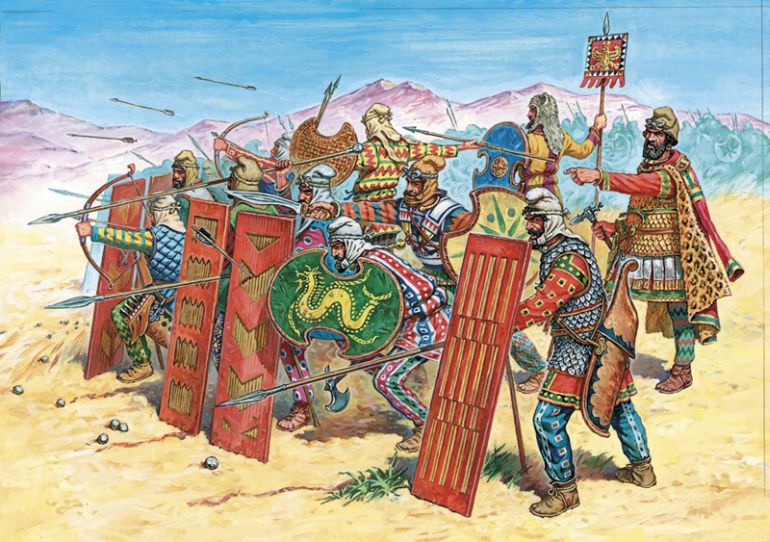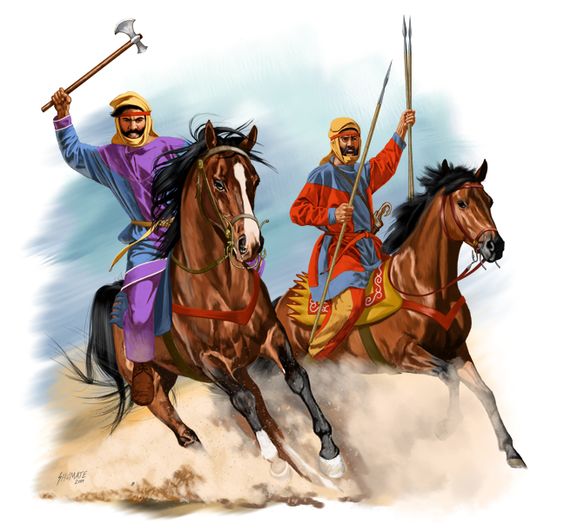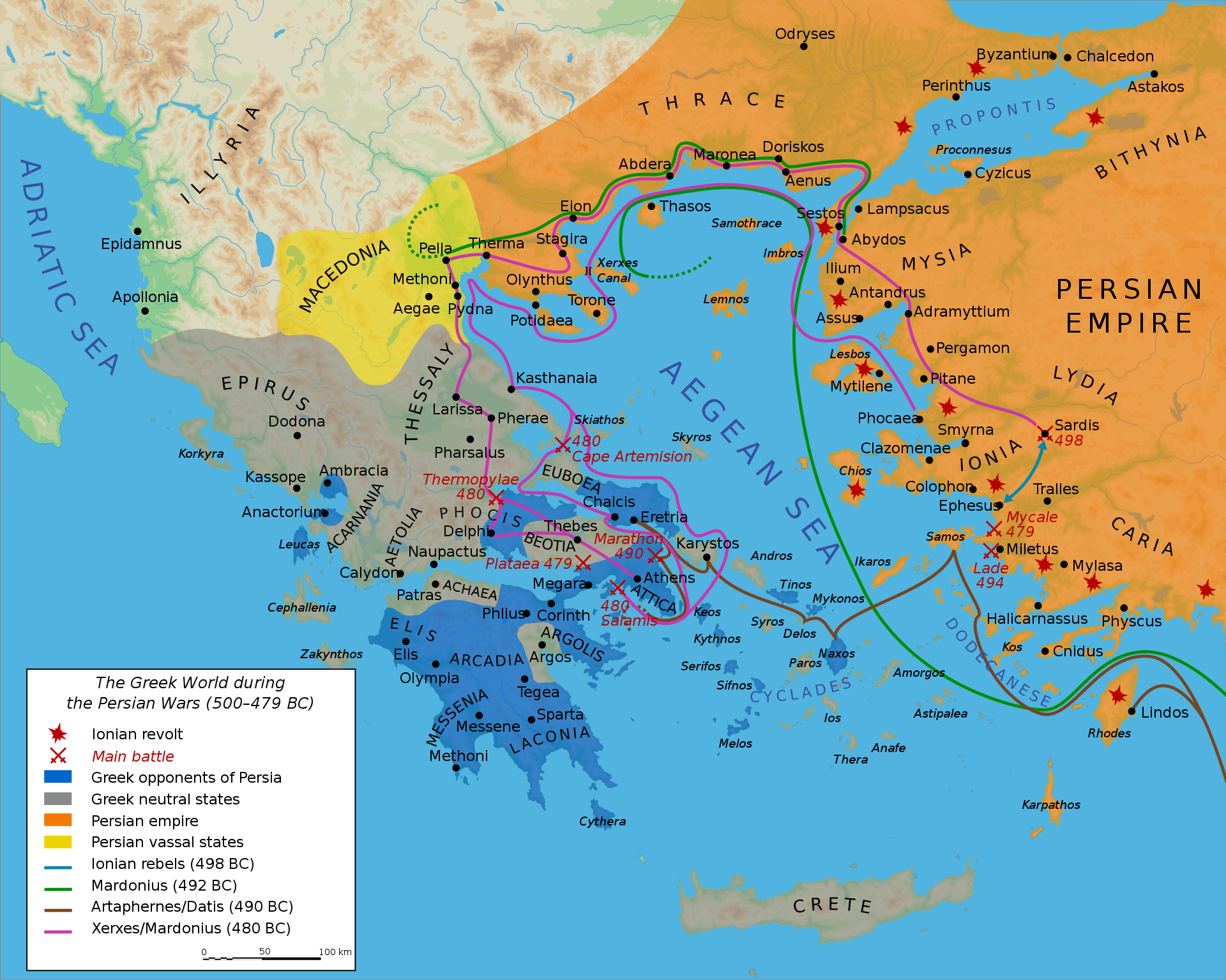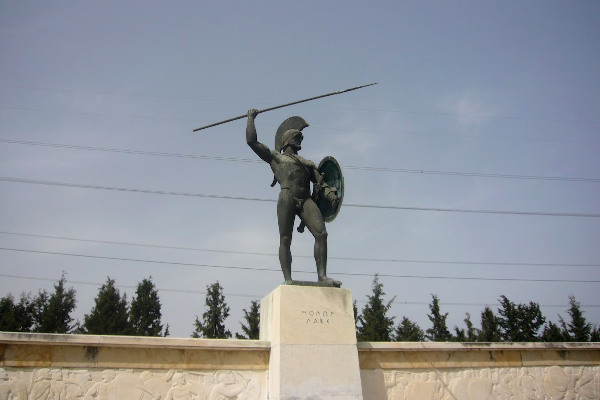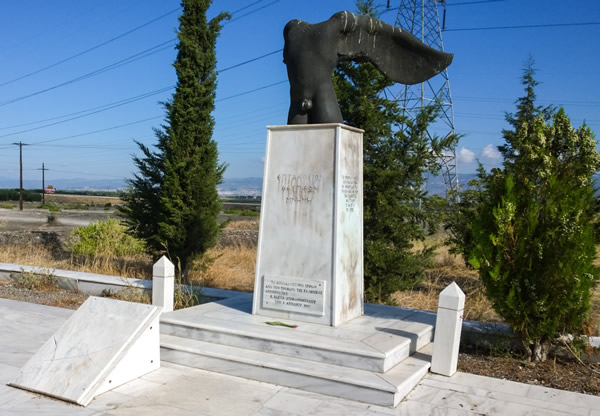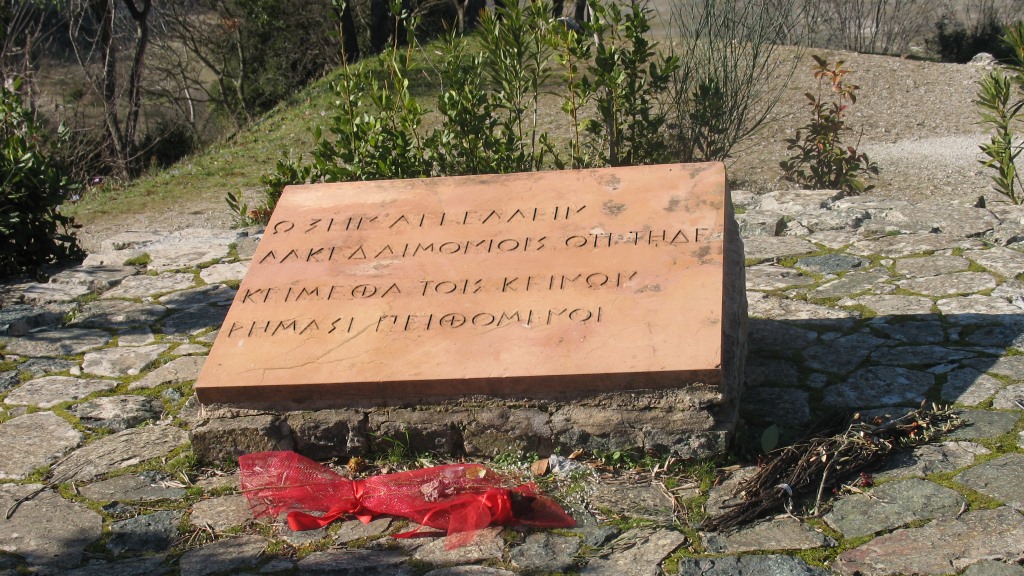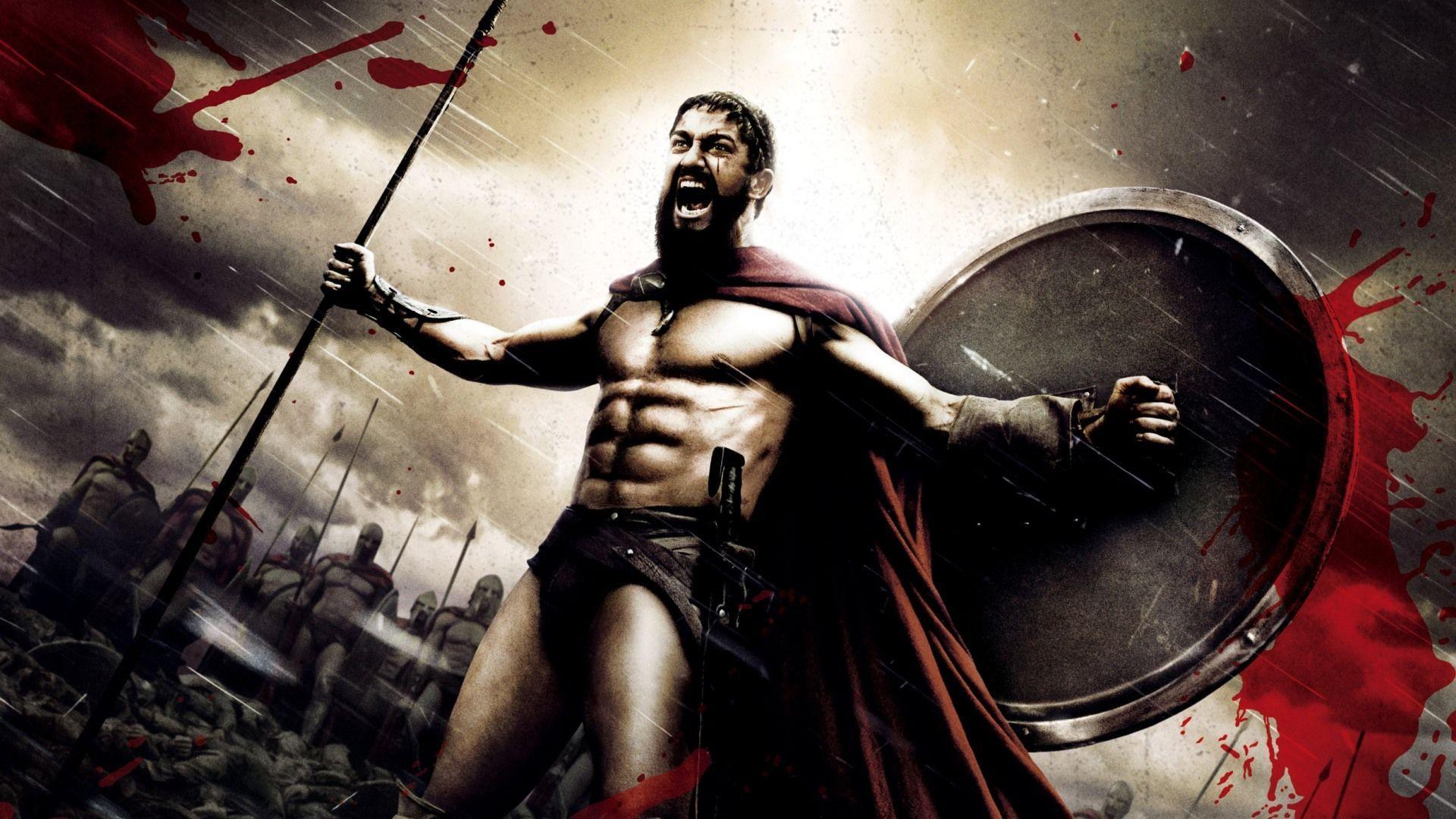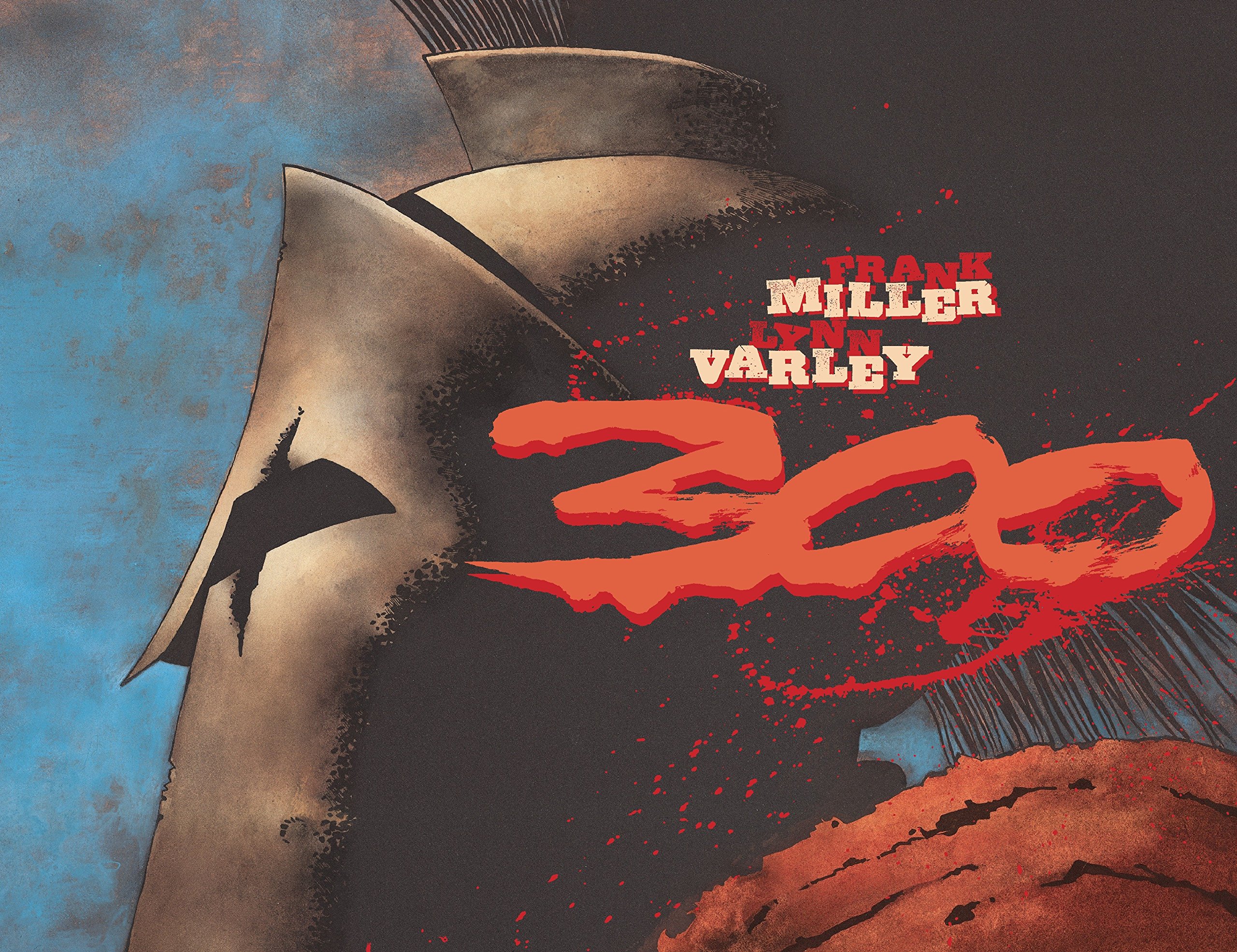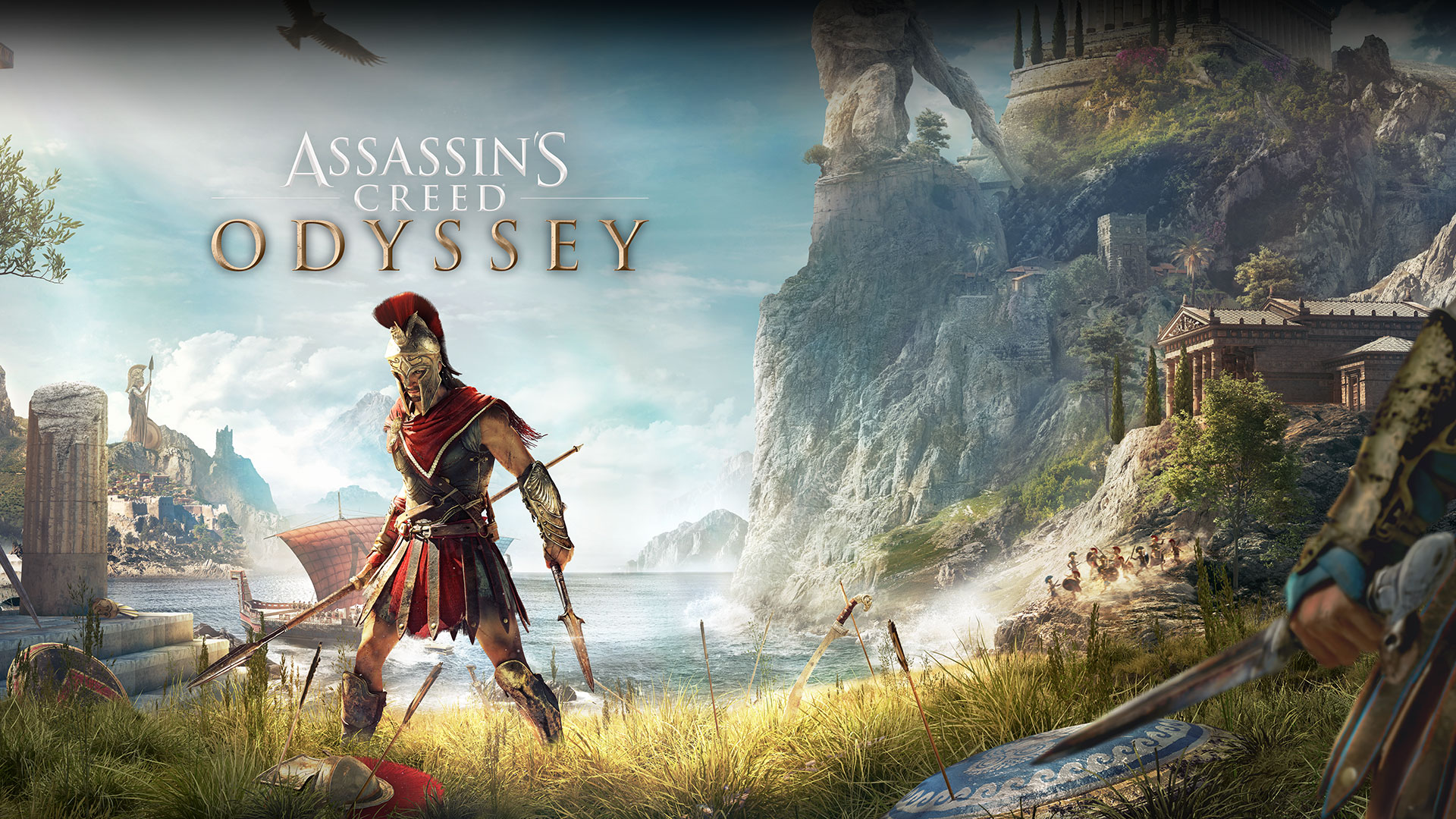Context
Already by the start of the 5th century, the neighboring Persian Achaemenid Empire was experiencing an
expansion into Europe.
King Darius I, the ruler of this vast Empire, had already subjugated Thrace and Macedonia. He had his
sights set on the rest of the Greek world.
It is important to remember that at this point in time, Greece was not a unified nation. In fact, it was
a vassal of indeopendant city states that shared a similar culture.
Darius I was keen to incorporate these states under his rule. In 491 BC, he sent an envoy to the Greek
city states demanding that they submit to his rule.
The Greeks refused, and Darius prepared an invasion force to take the Greek states the following year.
In 490 BC, King Darius I sent a fleet of 600 ships and 25,000 men to attack Cyclades and Euboea, before
meeting a combined Greek force led by Athens at the battle of Marathon.
This resulted in a decisive victory for the combined Greek fleet, halting Persian expansion into Greece.
However, this would not be the end of the conflict.
In 486 BC, King Darius I died, replaced by King Xerxes I. He planned to take revenge on the Greek states
by ammassing the largest invasive force ever seen at the time.
This was to be the biggest threat to Greek independence yet, and would again required a collaborative
effort between all states to fend off this bigger invasion.
A greek spy notified officials within the key city of Sparta of the approaching Persian army, and whilst
a plan was drawn up with other city states to send a force of 10,000 hoplites to fend off
the force at the Tempe Valley near Mt. Olympos, the festival of the Carneia made officials reluctant to
go to war, as this was a celebration where military action was prohibited by Spartan Law.
The Olympic Games, held around the same time, meant other city states were reluctant to fight for a
similar reason.
King Leonidas I of Sparta, could see the imminent threat to his city, and consulted with the ephors to
negotiate sending a small task force to hold off the invasion.
They agreed on sending a 300-strong unit of the Spartan Royal Guard (Known as the Hippeis) with
Leonidas. The goal, then, was to gather as many other greek soldiers along the way to defend a small
pass on the east coast of Greece.
This pass was known as The Hot Gates, or Thermopylae.
In addition to the land defence, a naval blockade by the Athenian Navy was set up to prevent the Persian
navy from out-flanking the Allied Greeks at Thermopylae. It was decided that the blockade would strong
hold at Artemisium.
Belligerents
The Allied Greeks
The combined Greek force is estimated to have numbered at around 7000 troops.
This mix of troops
consited of Thebans, Thespians, Phocians, Arcadians, Mantineans, Tegeans, Corinthians, Mycenaeans and
Phlians.
This combined force was entirely led under the command of King Leonidas I.
A typical hoplite soldier was laiden in bronze armour. This, across most Greek contingents, consisted of a bronze helmet, breastplate, greaves and a bronze covered wooden shield known as a Hoplon, from which the term Hoplite is derived. In the case of the Spartans, it is thought that they would wear a crimson red tunic, as well as a crested Corinthian helmet. A long, ash spear was the weapon of choice, followed by the Spartan Xiphos (a type of short sword). In a tight, phalanx formation, the hoplite soldier was a formidable fighter. Arguably the best type of soldier of its day. Each soldier's shield was protecting the solider next to him. The spears in formation provided a lethal wall aheasd of the front line. It was crucial to be diciplined in this formation, as each soldier was depending on the other to keep tightly packed next to one another to prevent gaps appearing in the line.
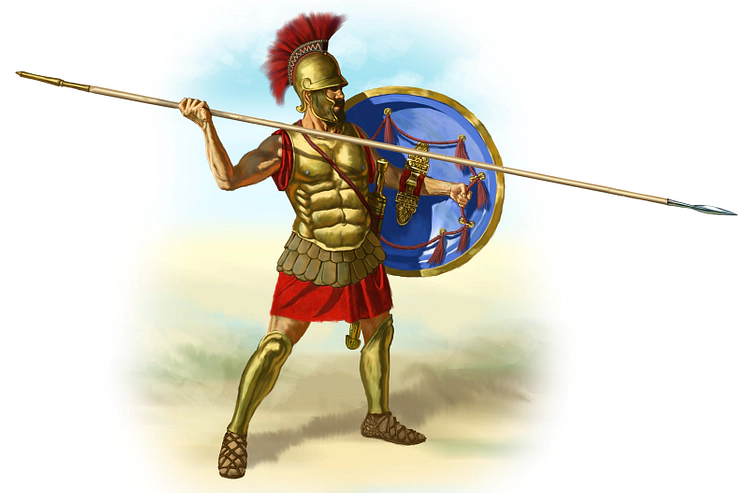
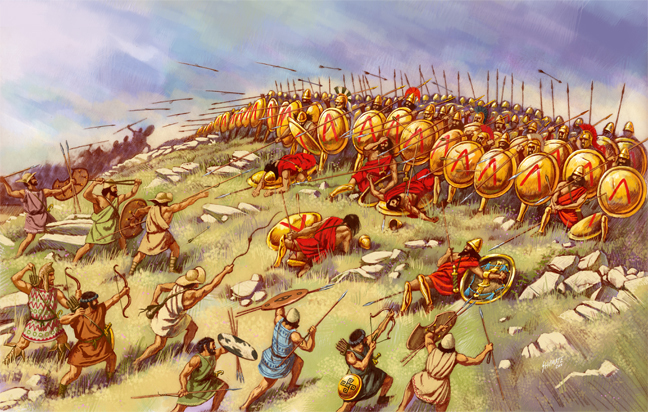
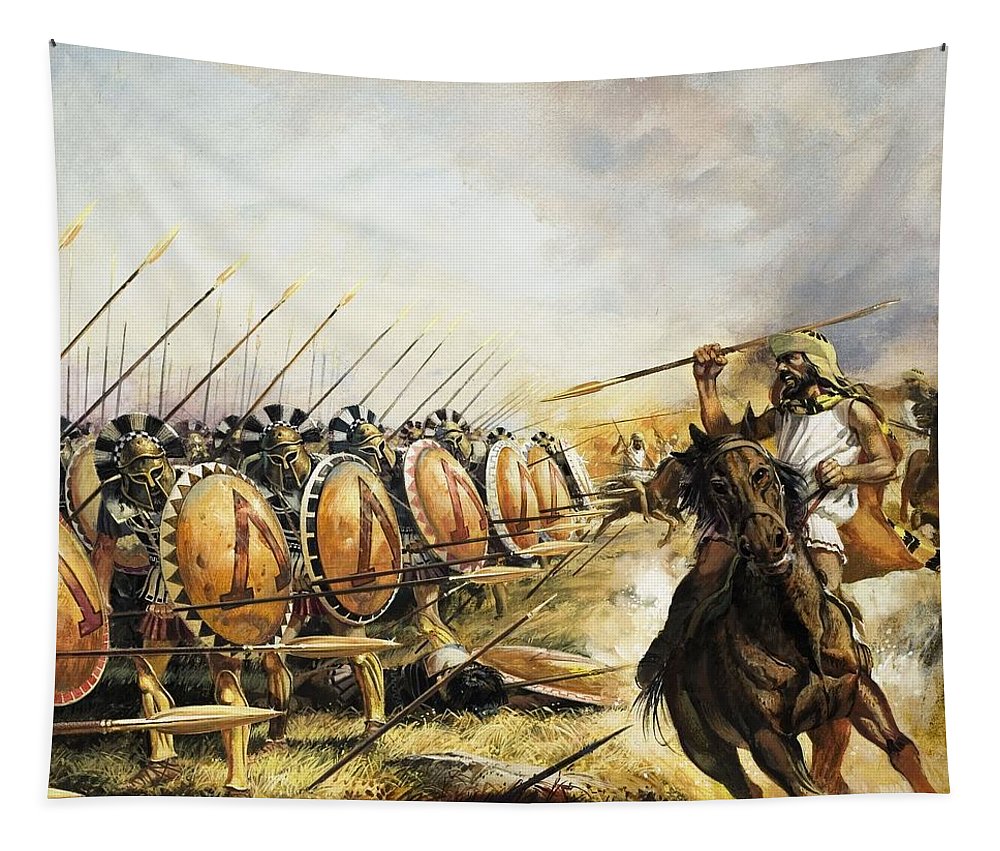
The Persian Army
The Persian army has had many varying estimates depending on different sources. However, modern day scholars estimate that the Persian army numbered anywhere between 12,000-300,000 strong. Xerxes' army had an even wider variety of warriors from across his empire, including: Persians, Parthians, Bactrians, Zarangians, Scythians, Assyrians, Babylonians, Egyptions, Lydians and Ethiopians.
The general term for the Persian army was 'Spada'. This consisted of infantry, cavalry (both horse and camel ridden), charioteers and archers. The Spada was organised in a decimal fashion. 10 men made up a company (dathapati), 10 companies made up a battalion (thatapati), 10 battalions made up a division (hazarapati) and 10 divisions made up a corps (baivarapati). A typical infantry man carried a wooden spear and a short sword, as well as a wooden shield. An archer would carry a bow and a quiver full of arrows made of reed and bronze/iron heads. Overall, however, in terms of armour, the average Persian soldier was under-equipped to deal with a an opposing phalanx army. Usually, only cloth clothing was used. Some may have worn a leather cuirass over this. Depending on whether some soldiers originated from, some infantrymen preferred to use a battle axe as opposed to a spear.
The Immortals, the Persian Elite Soldiers, were an army consisting of, at any one time, 10,000 men. They were better equipped as well. They used sturdier wicker shields lined in leather, wore a metal plated corset as well as his standard tunic. A soldier would have carried a short spear, a short sword or dagger, and a bow and quiver full of arrows. A soft cap was worn that could cover their faces quickly when marching through a desert.
